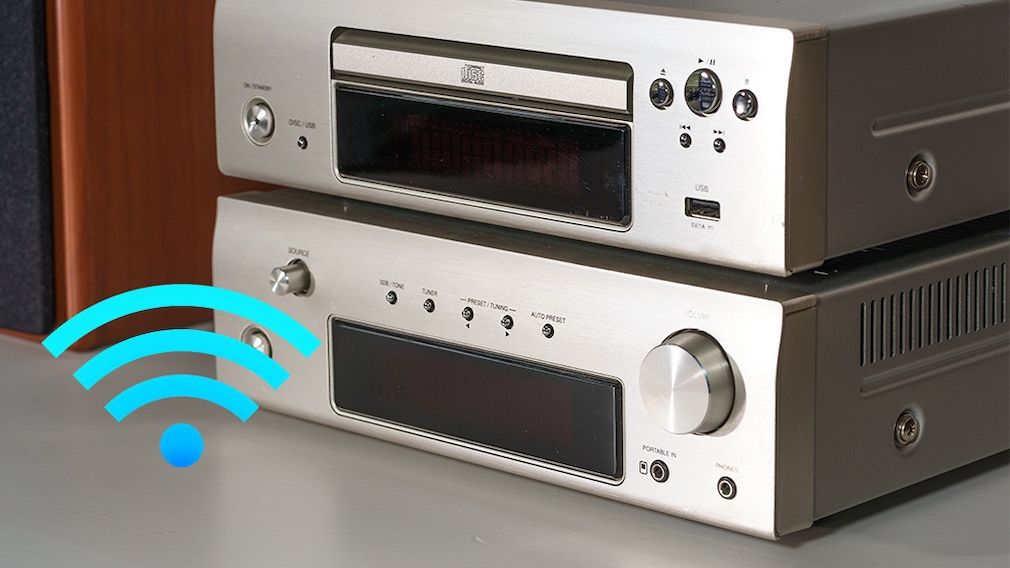
Albrecht DR316C Internetradio, 27344, Moderne HiFi-Anlage mit WLAN und DAB+, DLNA-Netzwerk kompatibel, stabiles Holzgehäuse in braun : Amazon.de: Elektronik & Foto

Echo Studio | Der beste Klang, den unsere smarten WLAN- und Bluetooth-Lautsprecher je geboten haben – mit Dolby Atmos, 3D-Audio, Smart-Home-Hub und Alexa | Anthrazit : Amazon.de: Amazon-Geräte & Zubehör

auna Silver Star DAB Radio, Internetradio mit CD, Digitales DAb Radio mit Lautsprecher Klein, Digitalradio, Musikanlage mit Bluetooth, Streaming Connect, CD Player, DAB+, WLAN, Display: Amazon.de: Elektronik & Foto

Amazon.com: Edifier WiFi Smart Speaker Without Microphone, Works with Alexa, Supports AirPlay 2, Spotify Connect, Tidal Connect, 40W RMS One-Piece Wi-Fi and Bluetooth Sound System, No Mic, MS50A : Electronics

Tivoli Audio Music System Home Gen 2 DAB+ / UKW/WLAN/Bluetooth All-in-one System (Weiß/Grau) : Amazon.de: Elektronik & Foto

Audio Pro Link 1 - Kabelloser HiFi Adapter für Audio Streaming & Multiroom - WiFi & WLAN Ethernet Verbindung - für Stereoanlage - Smart App-Steuerung - Grau : Amazon.de: Elektronik & Foto

Denon compact system, HiFi amplifier, CD player, music streaming, HEOS multi-room, Bluetooth, WLAN, AirPlay 2, Alexa compatible, 2 optical TV inputs, DAB+ radio: Amazon.de: Electronics & Photo

8-Kanal-WLAN-Bluetooth-Mehrraum-Home-Audio-System Stereo-Audio-Verstärker mit Airplay2 DLNA Spotify Amazon Alexa - AliExpress

VR-Radio Digital Radio: Stereoanlage, Alu, Internet-Radio/CD/DAB+/Bluetooth, 60W, DSP, silbern: Amazon.de: Elektronik & Foto

August WLAN Audio Receiver WR320- WiFi Bluetooth Multiroom Adapter für Lautsprechersysteme-kabelgebundene Lautsprecher in drahtlose Konvertieren-Aux Ethernet-kompatibel mit Airplay Spotify Radio DLNA : Amazon.de: Elektronik & Foto

sonoro Prestige Kompaktanlage mit CD Player, Bluetooth und Internet-Radio (UKW, WLAN, DAB Plus, Spotify, Amazon, Deezer) Matt Graphit : Amazon.de: Musikinstrumente & DJ-Equipment

Terris IWR 282 DAB+ WLAN Internet Radio, Aux-In/Aux-Out & Bluetooth Function - Compact Sound System with 15 Watt RMS Stereo Speaker : Amazon.de: Electronics & Photo

sonoro MEISTERSTÜCK Kompaktanlage mit CD Player, Bluetooth und Internet-Radio Weiß: Amazon.de: Elektronik & Foto

Imperial DABMAN i560 CD - HiFi Anlage mit Verstärker und CD Player - Internetradio/Digitalradio schwarz: Amazon.de: Elektronik & Foto

KEF LS50 Wireless II WLAN HiFi Lautsprecher System, Weiss, Aktivlautsprecher | HDMI | Airplay 2 | Bluetooth | Spotify | Tidal : Amazon.de: Elektronik & Foto

Amazon.com: TP-Link Deco Whole Home Mesh WiFi System – Up to 5,500 Sq.ft. Coverage, WiFi Router/Extender Replacement, Gigabit Ports, Seamless Roaming, Parental Controls, Works with Alexa(Deco M4 3-Pack) : Electronics

Amazon.com: TP-Link NFC-Enabled Bluetooth 4.1 Receiver, Wireless Audio Adapter Streaming Music from Echo Smart Phone Tablet PC to Home Car Stereo Sound System (HA100) : Electronics

Soundmaster Highline ICD1010AN Stereoanlage Internetradio WLAN DAB+ Bluetooth UNDOK Appsteuerung Wandhalterung : Amazon.de: Elektronik & Foto



